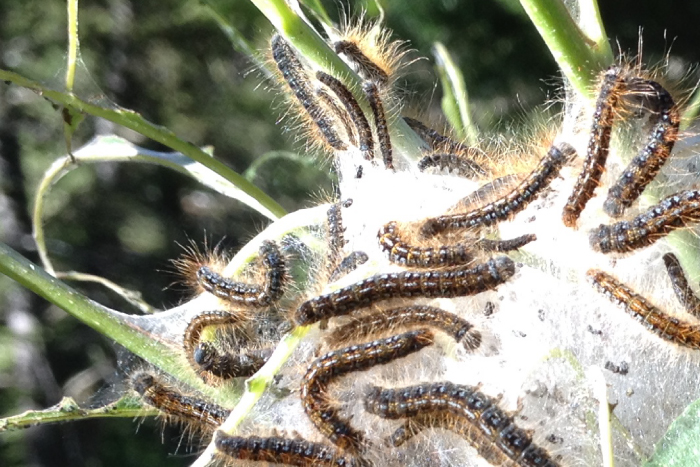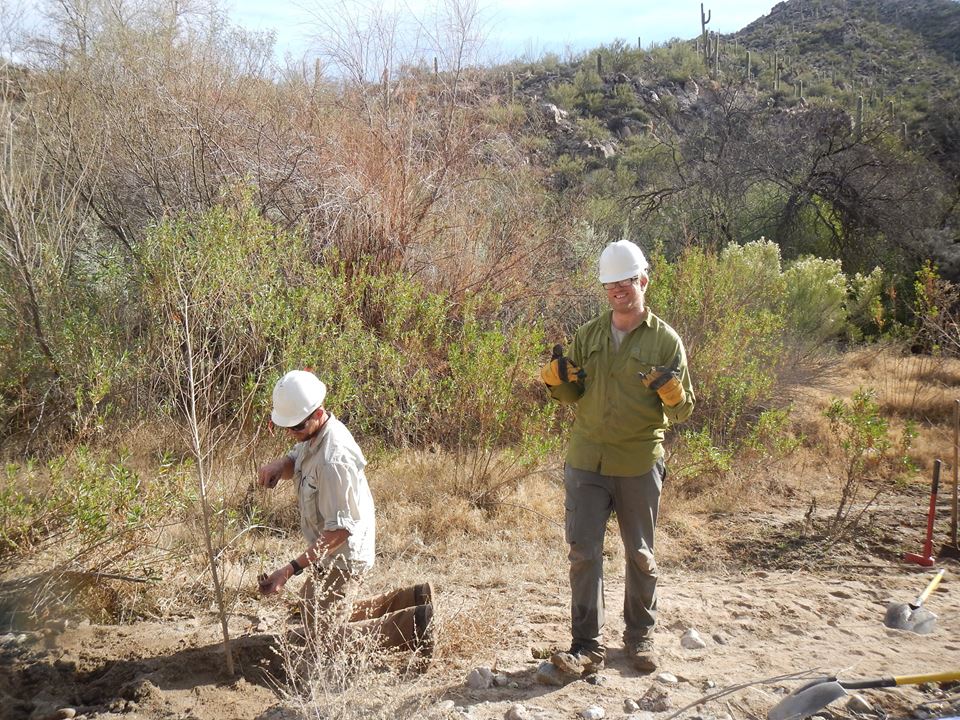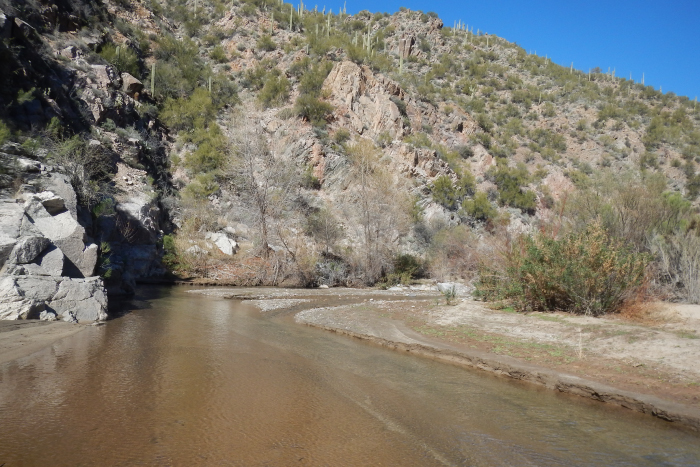|
|
Restoration of the Hassayampa River Canyon Wilderness
Beginning in 2015, Arizona Wilderness Coalition organized several groups to collaborate on the Hassayampa River Canyon Wilderness restoration project. The groups included a Prescott restoration crew, Phoenix College Conservation Corps, and three Prescott College classes, in cooperation with the Bureau of Land Management (BLM) Hassayampa Field Office. Overall, the project involved 49 contracted individuals, volunteers, staff from BLM and AWC that spent a cumulative total of 1,592 hours planting native vegetation near the Hassayampa River, approximately 18 miles northeast of Wickenburg, AZ. During this project, a total of 364 native cottonwood and willow poles and approximately 87 clumps of native rushes were planted and transplanted.

The intended outcomes for the project were to increase viable habitat for the Threatened Yellow-billed cuckoo, along with supporting habitat for other sensitive species such as the Lowland leopard frog and Long-fin dace. The BLM had identified this area as appropriate due to the well-established areas of Yellow-billed cuckoo habitat both upstream and downstream of the project area. Thus increasing the native vegetation within the project area should allow for continuous species habitat along the river corridor.
This project will require continued visitation in order to evaluate its success and necessary future alterations and additions. AWC and our volunteers hope to play an integral part in the long-term monitoring of this project. The story below describes the project through the lens of AWC’s restoration crew leader Brian Andersen — and be sure to check out the photos at the end!
* * *

On January 15th, 2016, the Arizona Wilderness Coalition’s crew of five met for the first time. We were about to embark on a journey to the Hassayampa River Canyon Wilderness - a remote, little-visited area where we would enhance habitat that has been damaged by years of erosion, high monsoonal activity and grazing impacts. Cattle have selectively grazed native saplings for years, reducing the number of mature willow and cottonwood trees in the canyon. We set out to plant as many trees as possible.
The desert riparian ecosystem in this wilderness area serves as vital habitat for several threatened and sensitive species along a critical migration corridor. The Cottonwood / Willow forest type is actually quite unique, imperiled because of the effects of draining, damming and diverting our Southwestern rivers.
A key conservation goal for this project was to bolster habitat for the threatened Yellow-billed cuckoo. Yellow-billed cuckoos are known for following swarms of caterpillars which depend on the cottonwood and willow habitat to exist. We were ultimately aiming to enhance caterpillar habitat!
Spending days in the river is pleasant enough, however waking up to frozen boots and cold feet is not what most people were rejoicing about every morning. We spent days digging holes and planting trees. Although the work was simple, knowing our actions could help this species made our actions rewarding.
Around the campfire at night there was consistent banter. Though we ranged in age from 18 to 69, we formed friendships and found commonalities. In our modern society we often live devoid of hard work, seldom being completely exhausted at the end of the day. While it is not something I long to do for the entirety of my life, it is good to acknowledge the value in this type of work - to give life with the work of our hands, work that makes friendships easy to find.
The Arizona Wilderness Coalition brought together a group of people to spend 14 days in the backcountry to try and make the world a better place. We planted more than 200 trees in the ground, which will hopefully grow, sequester carbon, and enhance habitat for our native biodiversity. Which makes going to sleep exhausted totally worth it.

The inagural crew: Tom Miller, Brian Andersen, Julie Polovitch, Anna Faith Jorgensen, and Andrew Gosnell.
|

We worked to increase viable habitat for the threatened Yellow-billed cuckoo.
|

The Yellow-billed cuckoo dines on caterpillars (even hairy ones, like these), other insects, and small berries.
|

The intrepid restoration crew, along with volunteers, BLM staff, and more, spent almost 1,600 hours planting native vegetation along the Hassayampa River.
|

Crew member Brian Andersen.
|

Crew member Andrew Gosnell
|

Crew member Tom Miller
|

Andrew planting one of many Cottonwood and Willow saplings along this critical migration corridor.
|

Crew member Julie Polovitch
|

This project area has well-established areas of Yellow-billed cuckoo habitat both up- and down-stream.
|

Crews dug deep holes along the Hassayampa River.
|

Deep holes help the saplings take solid root and allow for adequate watering.
|

The project area will need future monitoring to evaluate its success and future steps.
|

Join us on Meetup.com to stay up-to-date on future projects!
|

Such beauty, a haven close to Wickenburg.
|
Brian Andersen is a former AWC intern from Prescott College who is currently leading an exciting life in Panama with the Peace Corps.
The Hassayampa River Canyon Wilderness restoration project is made possible by the generous support of the National Fish and Wildlife Foundation.
Explore Arizona's Wilderness areas while giving back – join us on a Wild Stew trip!
|


